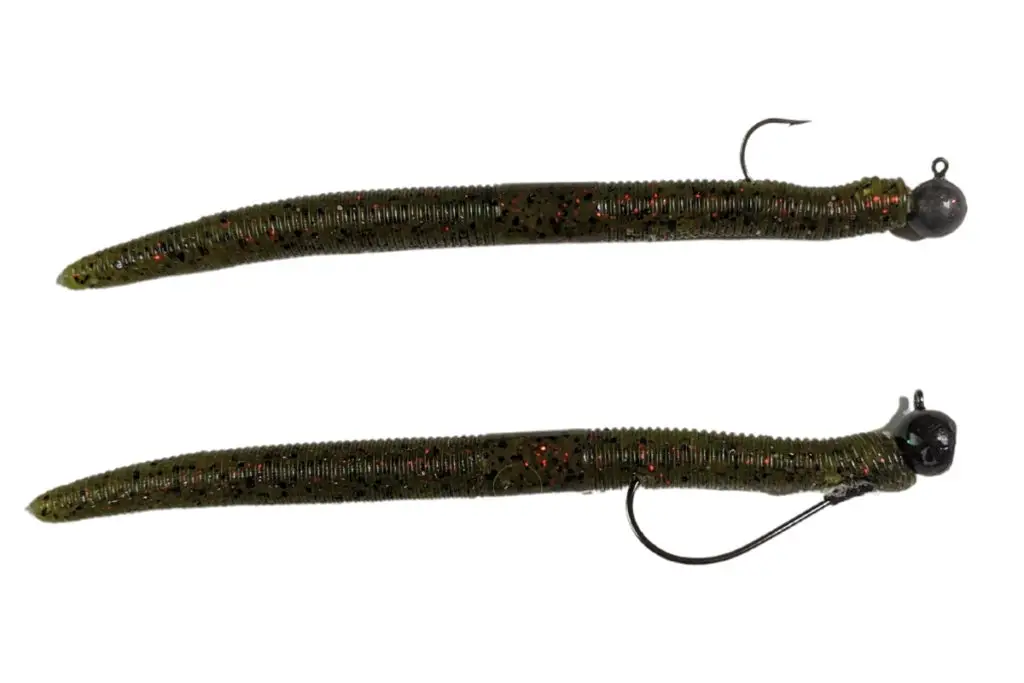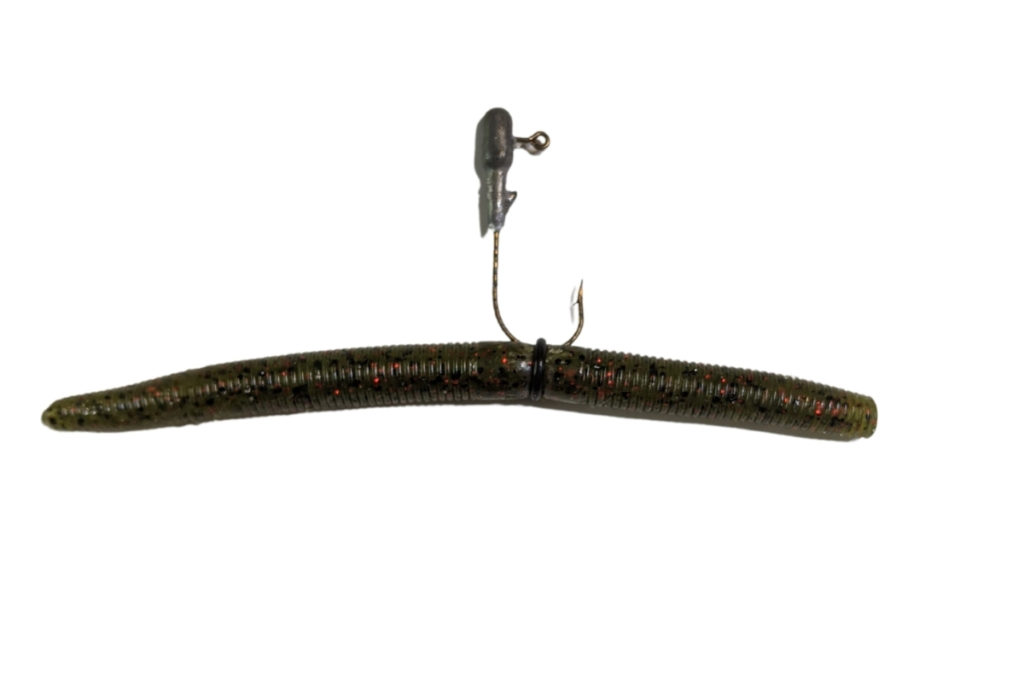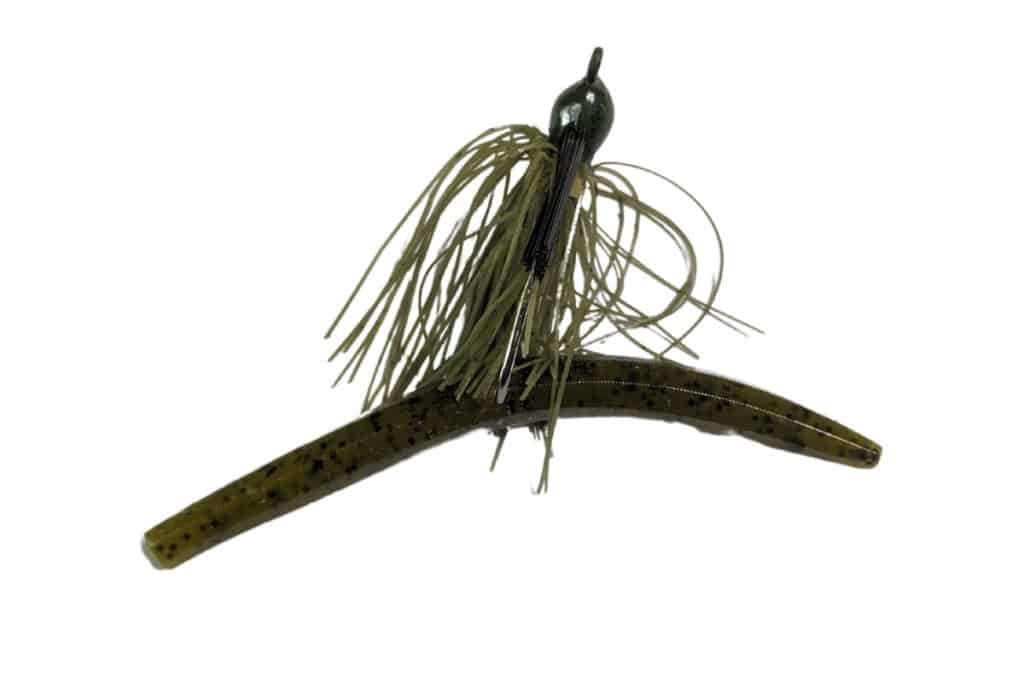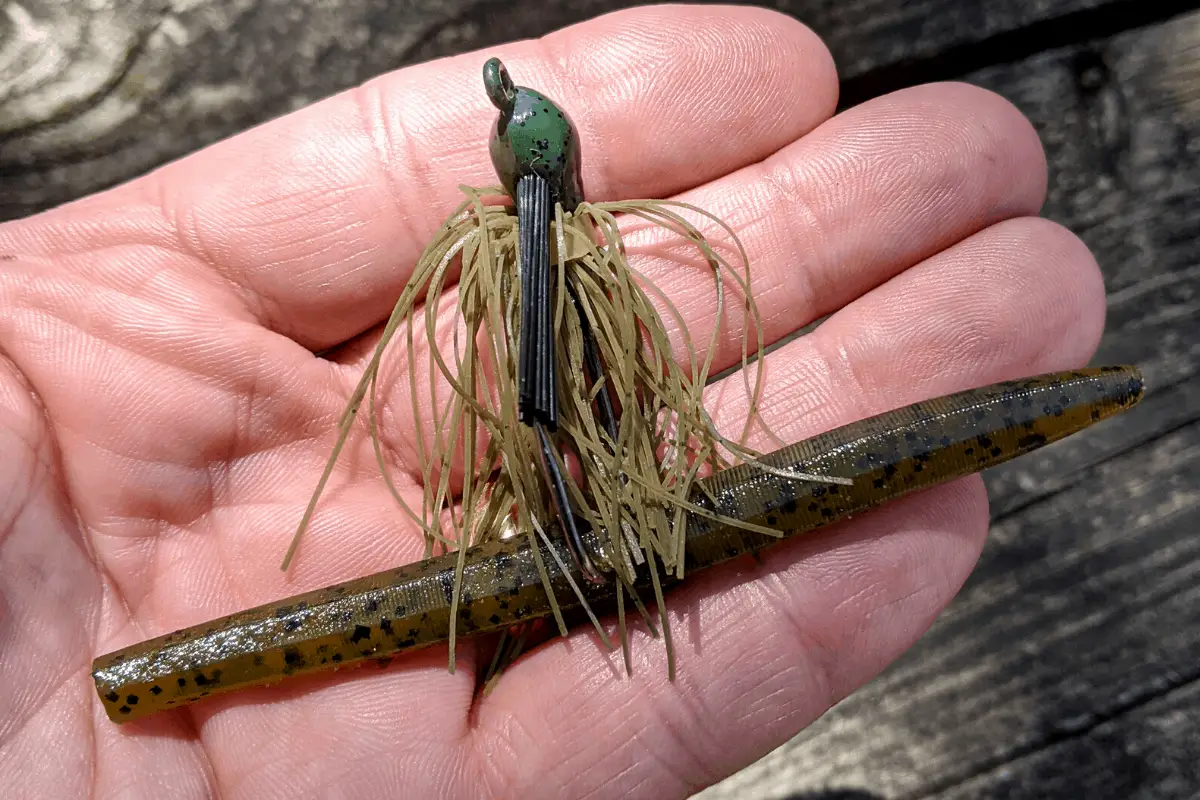The Senko, or stickbait, has been a dynamite lure every since Gary Yamamoto introduced it to the bass fishing world. It seems like everyone throws it. These 6 methods of rigging will set you apart from the crowd and offer the bass a different look.
To stand out from the tens-of-thousands of anglers that throw stickbaits, an angler needs to try something different or go back to old-school methods that have fallen out of the spotlight. The following rigging methods are proven fish catchers and can offer the bass another look they may have not seen.
In this article, we will be discussing other ways to rig a traditional “Senko” style stickbait that will catch fish.
The Stickbait or Senko
An article from Bassmaster.com gives us an interesting look at the development of this lure that changed bass fishing forever.
The lure, according to Yamamoto, was initially designed to be another version of a soft jerkbait. “I originally wanted to make a twitch bait like the Slug-Go,” Yamamoto says, “but after the initial phase of testing it turned out that the Senko was better as a finesse bait.”
Yamamoto was out fishing on Sam Rayburn Lake in Texas and saw a fish on a bed. “When I casted to it I missed by 4 feet and thought I had to try again because they typically ignore things that aren’t in the bed. As the bait fell, I saw the fish come off the bed and pick it up. That’s when I knew there was something special about it.”
The popularity of his creation created a brand and one of the most iconic companies in the bass fishing industry. I find his inspiration for the lure fascinating, “I got the idea for the shape from a Bic pen I had. I made up some wood prototypes then called the office and told them to make a mold from this pen.”

The Ball Head Method
It is simple. It seems like it is too easy. Yet it works.
Taking a standard ball head jig and rigging it on a stick bait, or Senko, is something that catches fish on a consistent basis.
It provides a look that bass rarely see. Often when anglers use a ballhead jig it is on some sort of finesse worm.
The larger profile of the stickbait not only looks distinct, but it offers a different fall rate and vibration signature than a finesse worm.
Using a ball head jig that has a longer shank tends to work better, but the standard jig head does catch them.
Here Are the Links to the Products I use for These Methods
Roundball Jigheads, Shakey Heads, Bitsy Flip Jigs, Insert Tube Heads, Neko Hooks, Ocho Stickbait, Zero Sitckbait
Fall Rates
It is quick and easy to adjust the size of the ball head jig. An angler can change sizes to fish deeper water, probe ledges, and hold in current.
A standard ⅛ oz is a solid all-around choice for most situations while the ¼ oz size is perfect for deep water applications.
A traditional lead-head works well, but using powder-coated options like black, green, and white create even more looks that others may not be using.
Having a wide selection of ball heads is something anglers should keep with them. It provides a range of rigging options for multiple lures and can make a stickbait the lure of choice for wary largemouth and smallmouth.

Weighted Wacky Rig
The number of bass anglers I see throwing a weightless wacky rig is too many to count.
Why?
It works.
There are times when we need something a little different. Especially on pressured bodies of water. It is discouraging to see three boats ahead of you on the same shoreline all throwing weightless wacky rigs.
It is a true finesse technique, but eventually, the bass are conditioned to seeing the same exact thing.
That is where a weighted wacky rig can shine.
Some anglers prefer to use a nail or screw in the tail of the bait as the weight, but that changes the fall angle. If you wish to maintain the same horizontal shimmy action of a weightless wacky, the weight needs to be on the hook.
I have used a standard insert tube head as a weighted wacky rig hook for years with tremendous success.
A small shaky head can also be effective.
There is likely something already in your hook collection that will suffice. The weighted hook doesn’t need to be anything fancy. The idea and purpose are to get the stickbait to fall at a slightly different rate.
When fishing behind others this can be the subtle difference that triggers reluctant fish to strike.
Weighted wacky rigs are also excellent in current. I use the aforementioned insert tube head version on the Mississippi River all the time and caught many smallmouth with it.
It is easy to change weights to match the amount of flow on any given day.
Adding a weighted wacky rig is a simple alteration that can yield results immediately.
The Bungee Jumper/Neko Rig
This rigging technique is not new and many articles and videos have been done on it.
Yet I see very few anglers using it.
If I had to guess, it is because it takes a little longer to put together.
We can use this to our advantage and offer up something that others may not take the time to use. When I plan to fish this setup, I like to take a few minutes before I ever hit the lake and rig up an entire bag of Senkos so I can switch them out quickly.
The most common weighting method uses a small nail.
I use one of two other methods. I will either take a roundball jighead and snip off the hook or I will use a screw.
The roundball holds best if superglued into position. The screw rarely falls out and can be replaced quickly to experiment with different fall rates.
Often, the Neko Rig or Bungee Jumper rig, places the hook right in the middle of the stickbait. Altering its position can change the way it looks in the water and how it falls.
If the bass are not super receptive to the traditional hook placement, try moving the hook down towards the weight. There are times when this slight move can trigger the fish into biting the rig when only moments ago they ignored it.
It is also a hook placement position that not a lot of others utilize, so once again, it is something different.
Split Shot Rigging
This finesse technique has been around for a long, long, time.
Many call it a finesse Carolina Rig, because it is literally a smaller, lighter, version of it.
Even though most anglers have heard of the split shot rig it is something that is hardly ever thrown anymore. When was the last time you saw or heard someone talking about it?
I first cut my teeth on the split shot rig in the ultra-clear water of the bottom third of Table Rock Lake. Anglers in the early 2000s were filling limits sitting on rocky points dragging this tiny setup.
Then it seemed like everyone forgot about it. Use this to your advantage.
It is easy to rig.
First, Texas rig a weightless stickbait on your favorite worm hook. Then take a split shot and crimp it up the line anywhere from 12” – 18” above the lure.
Fish it just like you would a Carolina Rig, but with smaller and more subtle movements. You may even need to use spinning gear.
The size of the split shot can be changed quickly without retying which is another added benefit of this rig.
It works best in waters with rock or cleaner bottom composition. If there is a lot of vegetation in the water you fish, the split shot rig is not the best choice.

Wacky Drop Shot Rig
This method first was noticed by the public after the Bassmaster Elite Series event on Lake Oahe in South Dakota. Several top finishers were catching big bags of smallmouth using a wacky-rigged drop shot.
Just like the previous methods, this is very simple to rig and fish.
Take your favorite spinning gear and rig a traditional drop-shot setup, but you may want a slightly larger hook than you normally use.
Take a stickbait and rig it wacky style just like you would a weightless wacky.
The natural convection currents and movement of the water will impart a tantalizing action to the lure that bass love.
And the best thing – very few others are likely using it on their drop-shot setups on the waters you fish.
As the summer moves along and the majority of the bass move to offshore haunts, drop-shotting is a go-to method. Try wacky rigging your drop-shot rig and you most likely will get some bigger fish finding your offering irresistible.
The Wacky Jig
This method was first talked about several years ago and it has largely disappeared from mainstream bass fishing.
The vanishing act is too bad because this method works. Especially when your goal is to reduce the fall rate.
When bass are suspended along dock pilings, against vertical structure, or just want a slower fall because of poor water clarity, a Wacky Jig can be the right recipe for success.
Take your standard flipping jig and instead of the traditional plastic trailer you may use, take a stickbait and wacky rig it on the hook.
It looks weird. Really weird.
Those appendages sticking out horizontally shake and shimmy a lot and slow the rate of fall. Mix-and-match the color to either complement the jig or go the opposite way and present a strong contrast in color that may shock the bass into biting.
A 5” Senko or stickbait is the standard fare when wacky jigging, but using a smaller offering is an easy way to adjust the fall rate quickly.
Try it along a variety of vertical structure and cover when the bass are likely to hit the lure on the drop. I can almost guarantee that very few people will be fishing it on your home water. You may even catch some fish that others miss.
Final Thoughts
We all know that a Senko rigged with the traditional weightless wacky setup works. It has worked for a long time and it will work well into the future.
There are days when so many other anglers are throwing it that various rigging options and setups can separate you from the crowd and show the bass something different.
If the water you fish is pressured, especially on weekends, these six methods can help mop up behind other boats that have already worked your favorite shoreline.
Tight lines. Be safe and don’t forget to encourage someone today. You never know how you may change their life forever.
Isaiah 6:8

